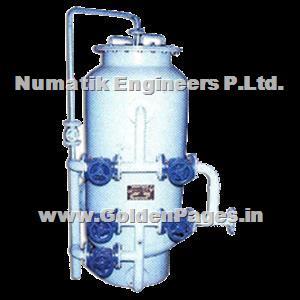
Demineralization Plant
DEMINERALIZATION PLANT
Ion exchange technology is used to remove salts (cations and anions) from the water Soluble chemical compounds, when dissolved in water, become ionized; that is their molecules dissociate into positively and negatively charged components called ions. Consider common table salt, sodium chloride. In its solid form, this compound consists of one sodium atom (Na) and one chlorine atom (Cl) tightly coupled together (NaCl). When dissolved in water, however, the compound splits into two ions, Na and Cl.
Ion Exchange
A process in which Contaminant ions are exchanged from water is called ion exchange. This process occurs in ion exchange resin Initially, resin is loaded with hydrogen (H ) ion for cations and hydroxide (OH-) ion for anions. As water passes through the resin, the contaminant ions in the water displace the loaded ions from the sites on the resin. This is because the resin has a greater affinity for the contaminant ions. Affinity for most resins is based loosely on ionic size and charge





